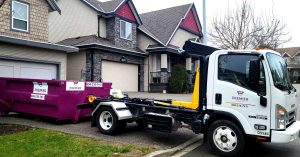Landscaping is the process of modifying a small part of land to increase its sustainability, value, and aesthetic appeal. Landscaping can include the craft and art of growing plants with the goal of producing beauty within the property’s landscape area.
Consider implementing additional landscaping to provide a fresh and entertaining look in your yard if your lawn is patchy and drab, plain monotonous, or plants have taken over your garden beds.
Landscaping is the practice of aesthetically or effectively maintaining and improving the ground on your property. A landscaping feature is any permanent item on your property ground that impacts the practical operation or overall aesthetic of your home.
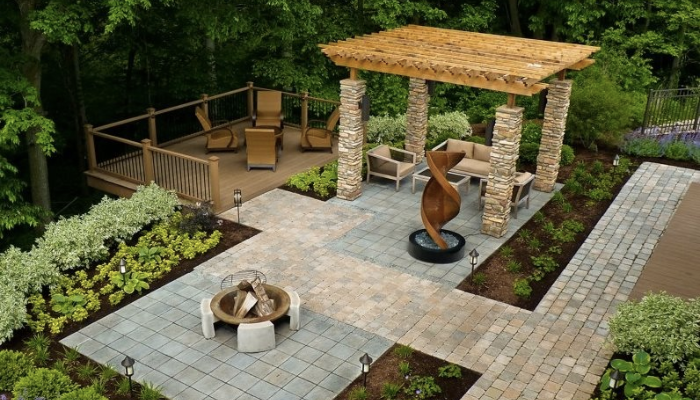
Modern landscaping involves making changes to a piece of land in one or more of the following areas:
- Plants – The inclusion of attractive, edible, native, or other sorts of landscaping plants to the landscape.
- Terrain – Grading, backfilling, mounding, terracing, and other methods are used to change the shape of the terrain.
- Structures– Fences, patio covers, walls, decks, elevated planters, and other built features are examples of structures.
Features of Landscaping
Your yard can be enhanced with these landscape features:
1. Planting Bed
One of the landscaping elements that can make your yard stand out is flower beds. The key is to choose colorful, lively flowers. Your freshly planted flower bed may appear sparse and unappealing at first, but as it grows and fills out, you will come to enjoy its beauty. When establishing flower beds, it’s best to choose a color scheme. To achieve balance, make sure the flowers you grow match the color and general design of your home.
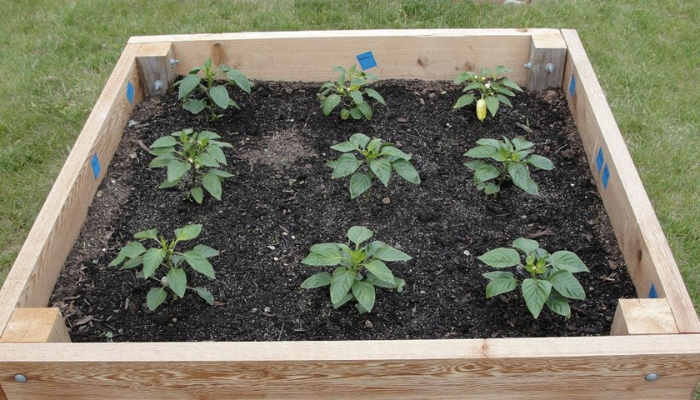
2. Pergola
Another fascinating aspect is the use of a sequence of arches to create a tunnel-like structure on one of the garden walks. When climbers are left to grow on a pergola, it transforms into an outdoor shed, eventually covering the roof completely.
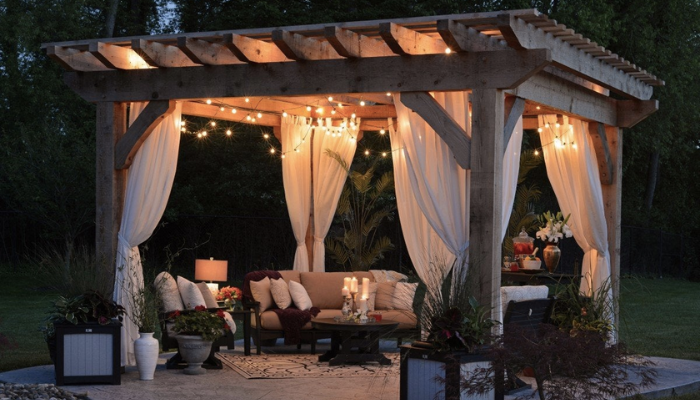
3. Lawns and Shrubs
A green, lush, and healthy grass will undoubtedly make your property look appealing. If they are unable to manage natural turfs, consumers will spend money on synthetic grasses. Similarly, bushes are an eye-catching landscape component in the yard. Several bushes provide beautiful berries, fall foliage, and florals, making them ideal for your lawn.
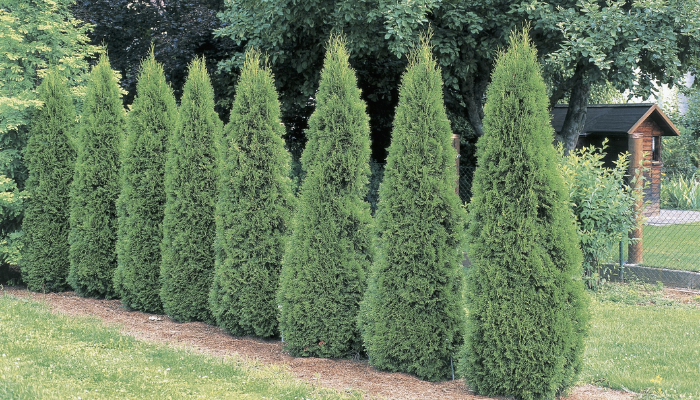
4. Flowering Trees
Flowering trees are well-known landscape features that make striking statements in the yard and welcome the arrival of warmer months for people living in northern climates. Including flowering plants in your landscaping Projects will make it more vibrant and appealing.
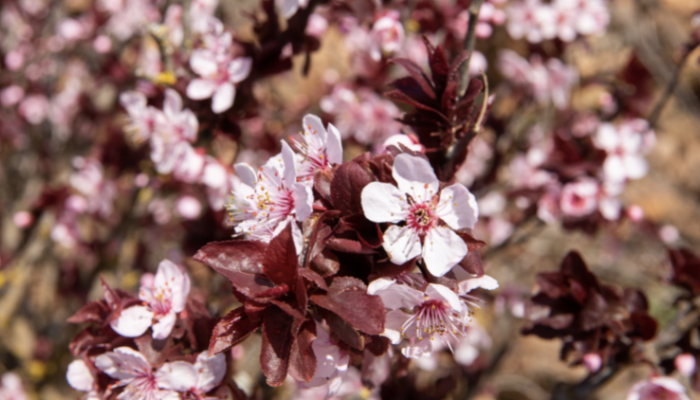
5. Walkways
A stone walkway provides a rustic touch to the house and complements the other landscape elements. Consider installing a sand set walkway, which is a simpler DIY installation alternative. Place the stones on a sand bed and fill in the gaps with gravel or sand.
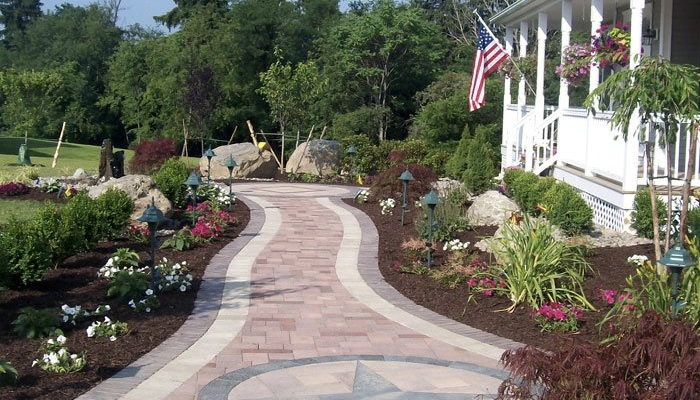
6. Fountains
Consider installing a stone fountain as a landscaping feature that will serve as a focus point. This landscape element, which produces a tranquil and pleasant atmosphere in your home, works best in the front yard.
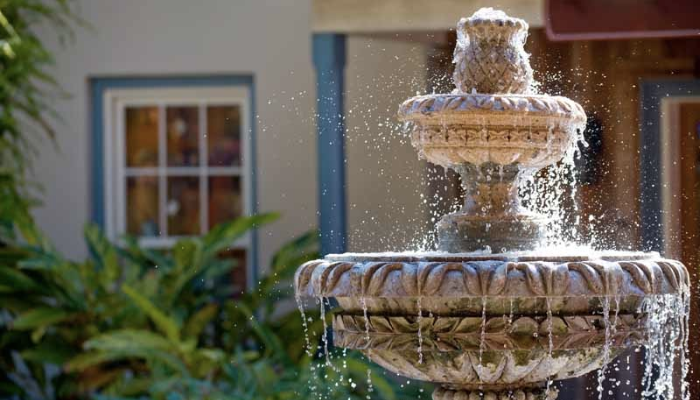
7. Outdoor Furniture
Please remember that outdoor furniture is typically bigger – it’s designed to be used to relax and lounge on. Arrange all of the pieces in your assigned space, assuring there is enough space for movement and that it does not interfere with other elements such as structures and plants.
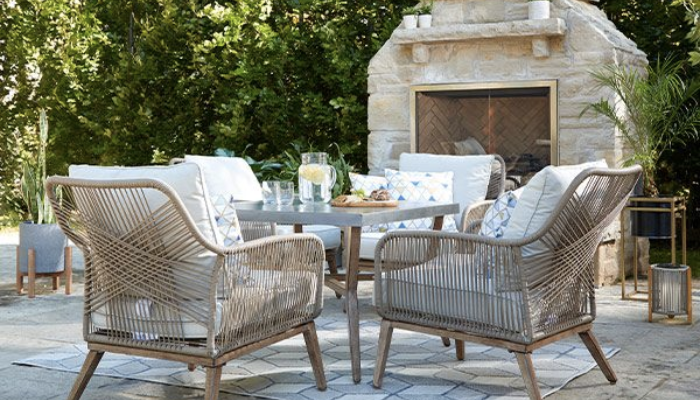
Furniture should complement the design of the landscape elements and, of course, the architectural style of the residence.
8. Shrubbery
These are areas in your garden where you can plant a variety of blooming shrubs, foliage shrubs, and bushes. Flowers for festive or occasional ceremonies can be grown on the premises. Shrubberies can support the growth of tiny trees. Shrubberies can also be used to conceal unsightly exterior constructions such as bathrooms, storerooms, pumping stations, and so on.
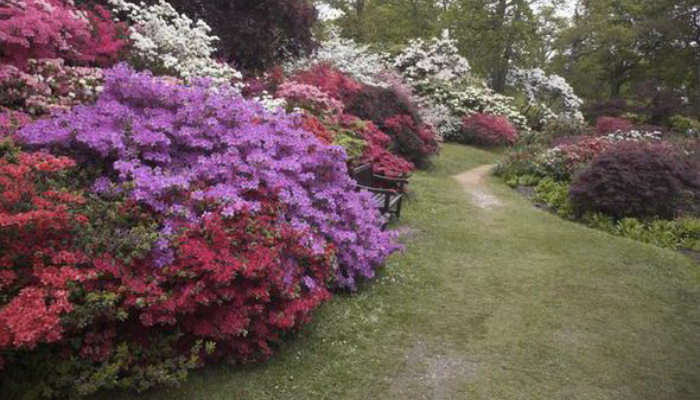
9. Fire Pits and Fireplaces
A fire pit, in addition to providing light, provides comfort on cool summer evenings and gives you a cause to go outside and stay outside during the colder months. Portable pits that may be moved around a yard to permanent pits built of brick, stone, or concrete are available.
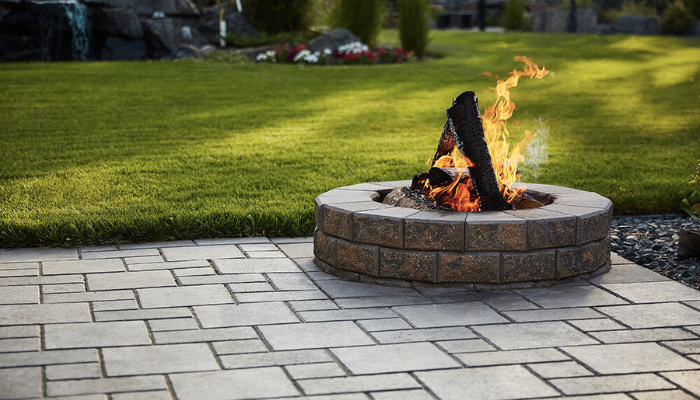
10. Lighting
Low-voltage systems can help you save energy and money. Lighting is frequently arranged in layers, beginning with the perimeter to attract attention to the property’s limits and progressing to walkways. Following that are the stairs and accent lighting, with a focus on safety and emphasizing garden elements.
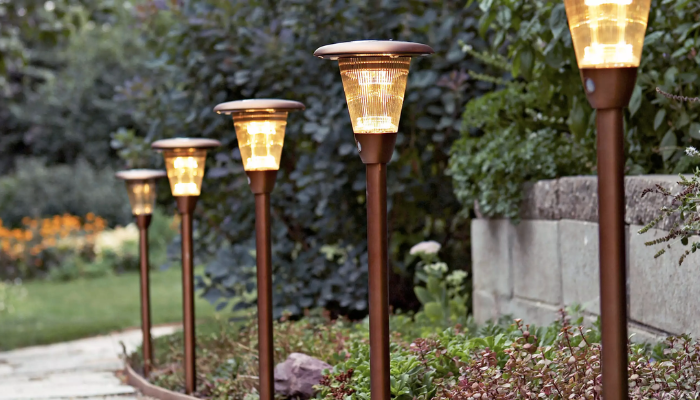
11. Pathway Trees
Small trees can be planted in a row along your social garden’s internal walkways. As the interconnecting internal paths of your property are used to reach other garden features, these trees offer that trail a legitimate appearance. Along jogging paths, little trees are also planted.
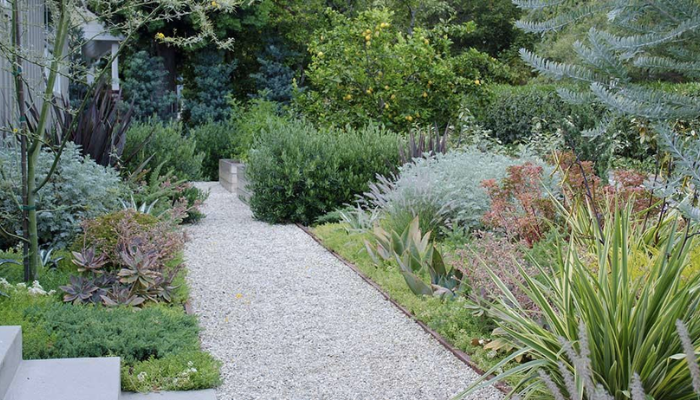
12. Decking
Outdoor flooring with wood or composite decking gives warmth and scenic wonders that concrete does not. It complements most building styles and fits well with the surroundings. A landscape architect can create a deck that is the perfect size, shape, and position for your backyard.
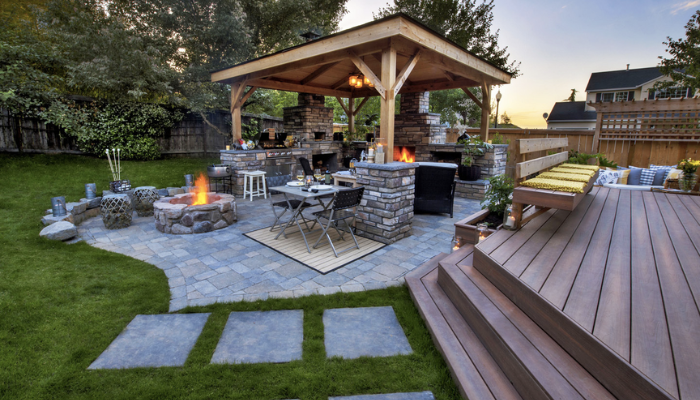
13. Grills
One of the most popular yard features is a grill or charcoal barbeque. It might not be higher on this list because many people already have one. If you only cook outside once or twice a month, a small stand-alone model might suffice. If you plan to do a lot of grilling, look for a model with built-in cupboards and extensions for greater cooking and prep room.
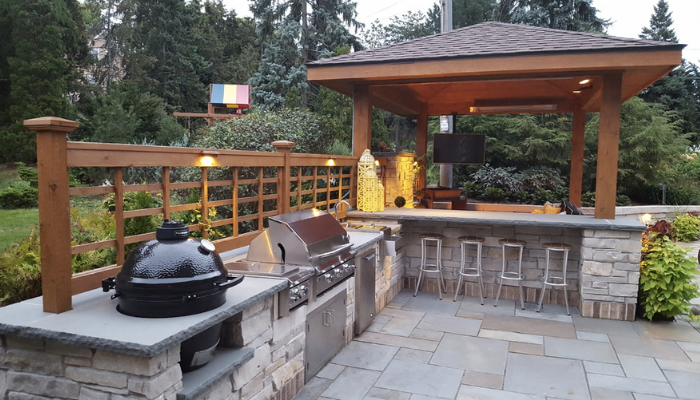
If the grill will be used as part of an outdoor kitchen with counters, get a built-in grill that can be installed on a custom-built substructure or counter.
14. Stereo and Sound Systems
Bulky equipment has been replaced by compact, portable, and less expensive Bluetooth systems. Invest in high-quality speakers, ranging from ceiling types suitable for pergolas and enclosed patios to in-ground models.
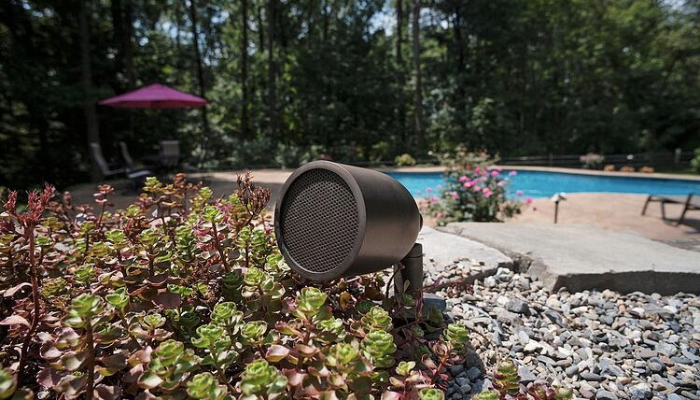
FAQs
What are the goals of landscaping?
To establish recreational areas for community engagement and leisure. To give homes with pastime opportunities. Reduce soil erosion to enhance and conserve natural resources. To minimize noise and pollution in the environment.
What is landscaping and why is it important?
Landscaping may soften distances between buildings, offer a path for pedestrians, provide area for cultivation, and improve environmental quality. A well-maintained and artistically designed landscape can draw people to the site, which helps to improve the property’s value.
What role does landscaping play in environmental protection?
Soil erosion and runoff can be prevented by maintaining healthy lawns and landscapes. There are two significant concerns when considering how to make your property more ecologically friendly: soil erosion and runoff from wastewater. In this regard, healthy lawns and landscapes can also be helpful.


